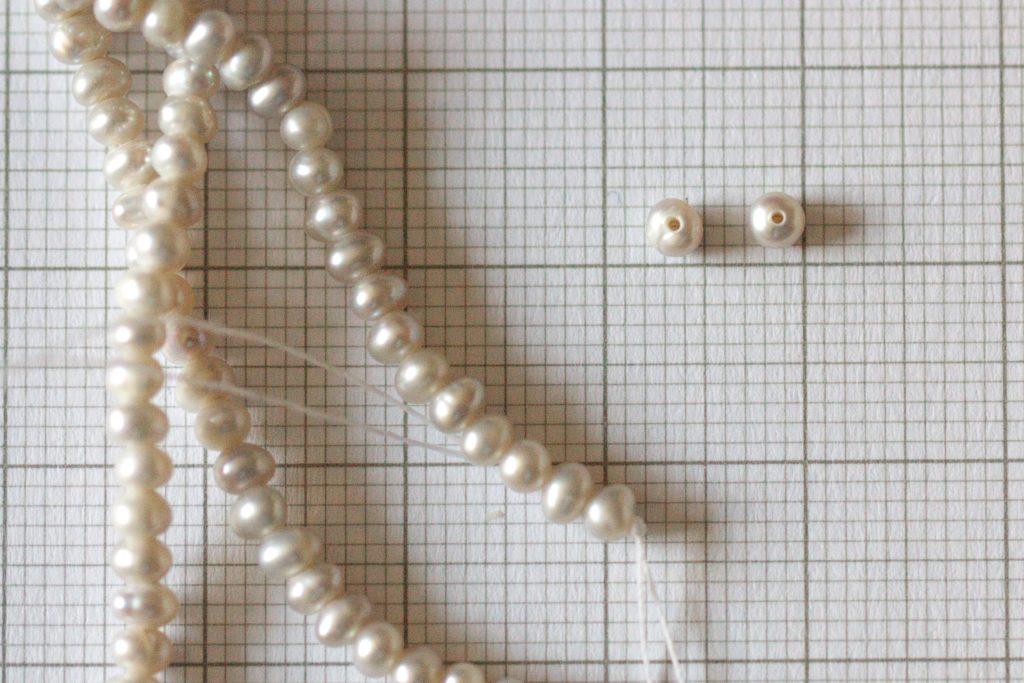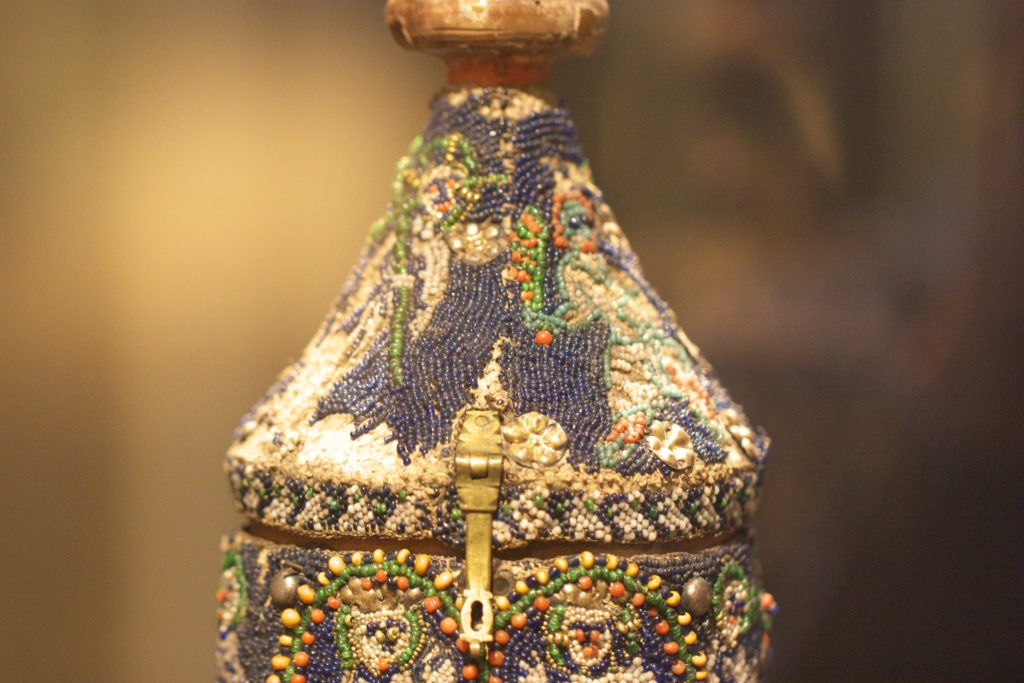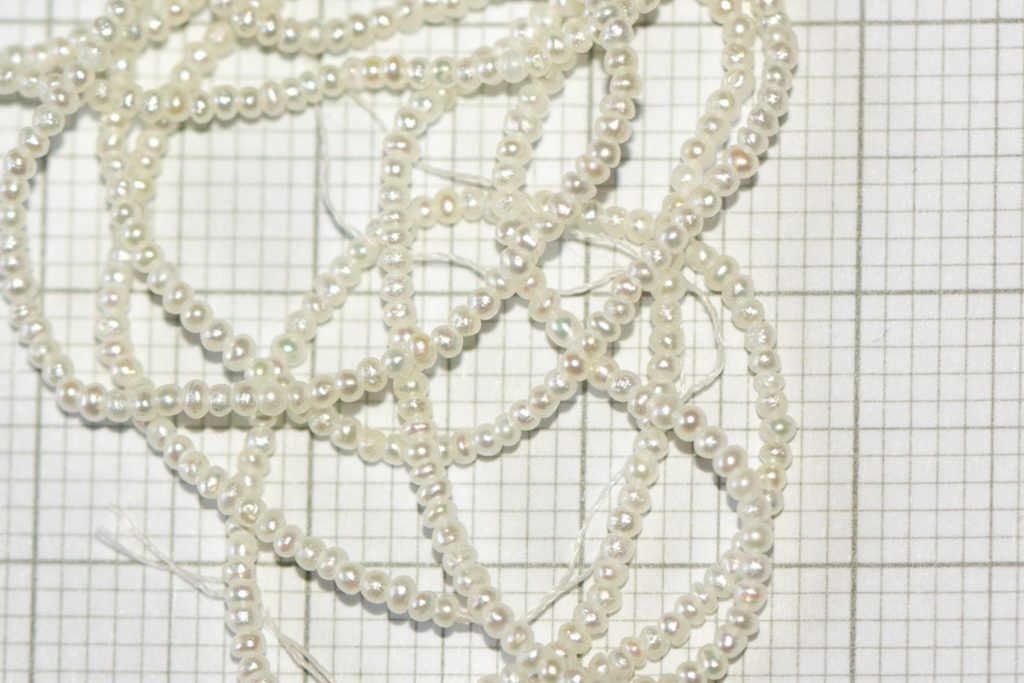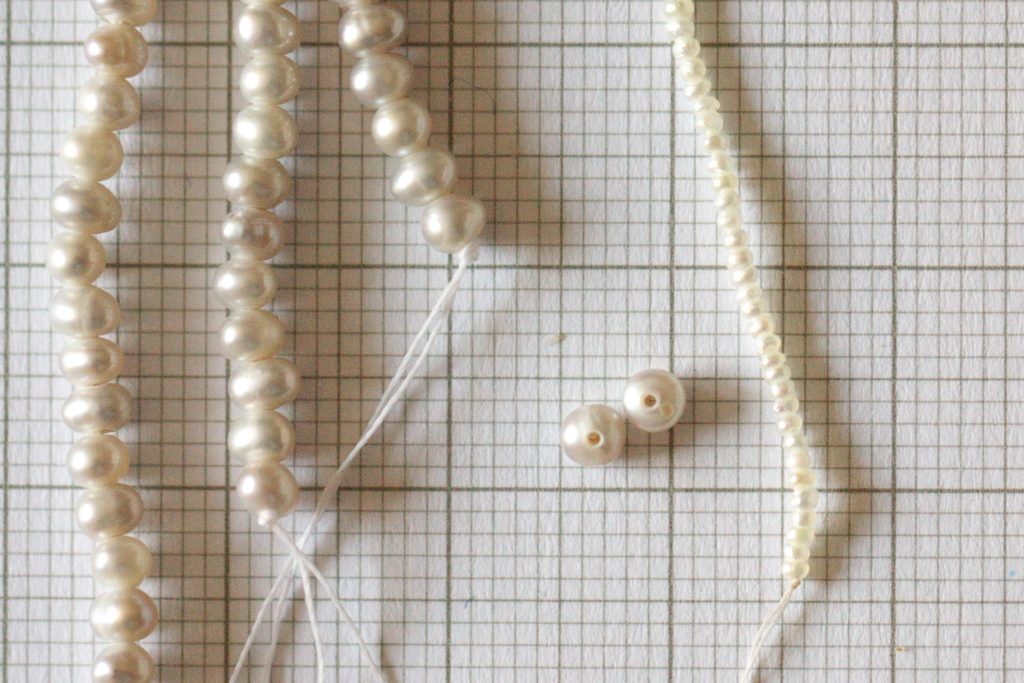Search the Blog
Latest Comments
Harma
Blog Break .
29. April 2024
Isn't the selvedge something to worry about in a later stage? It seems to me a lot more important th...
Beatrix
Experiment!
23. April 2024
The video doesn´t work (at least for me). If I click on "activate" or the play-button it just disapp...
Katrin
Spinning Speed Ponderings, Part I.
15. April 2024
As far as I know, some fabrics do get washed before they are sold, and some might not be. But I can'...
Kareina
Spinning Speed Ponderings, Part I.
15. April 2024
I have seen you say few times that "no textile ever is finished before it's been wet and dried again...
Katrin
How on earth did they do it?
27. März 2024
Ah, that's good to know! I might have a look around just out of curiosity.
I've since learned that w...
Luck with Tiny Things.
Sometimes, sometimes you're lucky, and you manage to get your hands on something that almost does not exist anymore. Case in point: Tiny seed pearls.
There are a few surviving medieval embroideries that include seed pearls (which is the common term for small pearls). If you're trying to buy pearls today, the rule seems to be "the bigger the better", so most offers are for large pearls.
Seed pearls are still relatively large; the smallest you can usually find (especially if they're supposed to be drilled through) is c 2 mm in diameter... which looks, approximately, like this:
[caption id="attachment_5142" align="alignnone" width="501"] Seed pearls. The backdrop is paper with 1 mm squares.
Seed pearls. The backdrop is paper with 1 mm squares.
This is a string of seed pearls I bought years ago; the smallest pearls I could find. They are still way, way too big to properly simulate medieval embroideries, though. Here's a picture from a pyxis in the Schnütgen Museum Köln, with corals, pearls, and glass beads of about 1-1.5 mm in diameter:
[caption id="attachment_5145" align="alignnone" width="640"] Embroidered container for the Host. Hildesheim, second half 13th century. Wooden core, covered in embroidery with glass, sweetwater seed pearls, corals and metal appliqué on parchment. Schnütgen-Museum Köln, N 42
Embroidered container for the Host. Hildesheim, second half 13th century. Wooden core, covered in embroidery with glass, sweetwater seed pearls, corals and metal appliqué on parchment. Schnütgen-Museum Köln, N 42
That is the pearl size that we're looking for. That, sadly, is the pearl size not available today, usually. So imagine my delight when, after the last conversation about this, I did another internet trawl, just to see if, maybe, maybe... and was successful.

Unfortunately, this string of pearls is not a new one, but an antique one (age unknown) which I got from an auction house. It does mean, however, that I now have a string of pearls in the proper size for demonstrations, or explanations...
Here's the two sizes side by side, so you can appreciate the difference even more:

...and I will take this as a sign that if you do not give up, things eventually might come. Even if they seemed impossible at some point.
I really do wonder, by the way, how the medieval pearl-drillers managed to drill such tiny, tiny holes into such miniscule pearls. You can hardly see these things, let alone hold them. Drilling a hole? I can't imagine how that's done. But there were lots of feats of similar size (or minisculity, rather): Gold threads. Miniscule miniatures. Tiny things in goldsmithing...
There are a few surviving medieval embroideries that include seed pearls (which is the common term for small pearls). If you're trying to buy pearls today, the rule seems to be "the bigger the better", so most offers are for large pearls.
Seed pearls are still relatively large; the smallest you can usually find (especially if they're supposed to be drilled through) is c 2 mm in diameter... which looks, approximately, like this:
[caption id="attachment_5142" align="alignnone" width="501"]
 Seed pearls. The backdrop is paper with 1 mm squares.
Seed pearls. The backdrop is paper with 1 mm squares.This is a string of seed pearls I bought years ago; the smallest pearls I could find. They are still way, way too big to properly simulate medieval embroideries, though. Here's a picture from a pyxis in the Schnütgen Museum Köln, with corals, pearls, and glass beads of about 1-1.5 mm in diameter:
[caption id="attachment_5145" align="alignnone" width="640"]
 Embroidered container for the Host. Hildesheim, second half 13th century. Wooden core, covered in embroidery with glass, sweetwater seed pearls, corals and metal appliqué on parchment. Schnütgen-Museum Köln, N 42
Embroidered container for the Host. Hildesheim, second half 13th century. Wooden core, covered in embroidery with glass, sweetwater seed pearls, corals and metal appliqué on parchment. Schnütgen-Museum Köln, N 42That is the pearl size that we're looking for. That, sadly, is the pearl size not available today, usually. So imagine my delight when, after the last conversation about this, I did another internet trawl, just to see if, maybe, maybe... and was successful.

Unfortunately, this string of pearls is not a new one, but an antique one (age unknown) which I got from an auction house. It does mean, however, that I now have a string of pearls in the proper size for demonstrations, or explanations...
Here's the two sizes side by side, so you can appreciate the difference even more:

...and I will take this as a sign that if you do not give up, things eventually might come. Even if they seemed impossible at some point.
I really do wonder, by the way, how the medieval pearl-drillers managed to drill such tiny, tiny holes into such miniscule pearls. You can hardly see these things, let alone hold them. Drilling a hole? I can't imagine how that's done. But there were lots of feats of similar size (or minisculity, rather): Gold threads. Miniscule miniatures. Tiny things in goldsmithing...
Comments
No comments made yet. Be the first to submit a comment



